Jeongjogwan of the Royal Room (왕의지밀 정조관)
8.8Km 2024-12-23
5218-10 , Chunhyang-ro, Wansan-gu, Jeonju-si, Jeonbuk-do
+82-63-284-1004
Wangui Jimil Jeongjogwan (‘Royal Room of King Jeongjo’) in Jeonju, Jeollabuk-do is a hotel that combines hanok style with modern convenience - one of a group of hotels named after Joseon kings. The hotel has six guest rooms, most with exposed beams and traditonal furniture, and the Grade 2 Gold and Silver rooms, big enough for six people, are especially popular with family travelers. Additional facilities include a hanok cafe, a restaurant, and a convention center. Major tourist attractions such as Namgosa Temple and Jeonju Hanok Village are 10 minutes away by car.
Sunjonggwan of the Royal Room (왕의지밀 순종관)
8.8Km 2024-12-23
5218-6 , Chunhyang-ro, Wansan-gu, Jeonju-si, Jeonbuk-do
+82-63-284-1004
Wangui Jimil Sunjonggwan (‘Royal Room of King Sunjong’) in Jeonju, Jeollabuk-do,’ is a hotel that combines traditional hanok style with the convenience of modern facilities - one of a group of hotels named after Joseon kings. The hotel has six rooms graded 2, 3 and 5 with Silver rooms and Gold rooms.; all rooms have fine scenic views. Additional facilities include a hanok cafe, a restaurant, and a convention center. Guests can reach anywhere in Jeonju Hanok Village in about 10 minutes by car.
Jungdam Hanok (대성 정담한옥)
9.0Km 2024-12-13
30 , Godeoksan 1-gil, Wansan-gu, Jeonju-si, Jeonbuk-do
+82-10-8753-3413
Jungdam Hanok is a private family pension located in a small rural village in Daeseong-dong, Jeonju. It has a two-story structure with a room, bathroom, living room, and kitchen on the first floor, and a large room and attic on the second floor. The kitchen is equipped with various kitchen utensils, and there is a separate barbecue area where you can cook barbecue on an iron pot lid. There are also several activities to enjoy such as karaoke machines, yutnori (Korean traditional board game), jegichagi (hacky sack), and badminton. Nearby tourist attractions include Jeonju Hanok Village, Gosan Natural Recreation Forest, and Songgwangsa Temple.
Barangsan Garden (바랑산가든)
9.1Km 2024-04-07
192 Daeyul 2-gil, Geumgu-myeon, Gimje-si, Jeonbuk-do
Barangsan Garden is a maeuntang (spicy fish stew) restaurant where visitors can enjoy their meal while admiring the scenery of Daeyul Reservoir. Their flagship dish is the megi tang (spicy catfish stew) made by boiling wild catfish and dried radish in a perilla seeds broth with seasoning. Other popular menu items include jap tang (assorted spicy seafood stew) made with freshwater fish and minmul jangeo gui (grilled freshwater eel).
Saekjang Rice Mill (색장정미소)
9.6Km 2024-04-07
2-15 , Wonsaekjang-gil, Wansan-gu, Jeonju-si, Jeonbuk-do
+82-63-272-2460
Saekjang Rice Mill, located approximately 5 minutes by car from Jeonju Hanok Village, is a unique cafe that transformed an old rice mill from the 50s. The cafe exhibits antique art works perfect as a photo spot, but the best photo zone is on the second floor that will take you back in time.
Happydream (행복드림한옥)
11.5Km 2024-08-05
181-21 , Bongseoan-gil, Wanju-gun, Jeonbuk-do
+82-63-247-0050, +82-10-3677-5339
Dueok Happydream Village is located in Bongseo-gol, Wanju-gun, Jeollabuk-do - a location said to be one of the most propitious in Korea, owing to the surrounding mountains’ resemblance to the Bonghwang mythical bird. The guesthouse’s tile-roofed buildings are set in a wide grassy yard against a background of green mountains. As well as accomodation the village operates various nature and traditional culture experience programs, some of which take place at the guesthouse. The rooms are small but clean and comfy, and with the doors open offer scenic views.
Gwisinsa Temple - Gimje (귀신사 - 김제)
12.4Km 2024-04-07
40, Cheongdo 6-gil, Gimje-si, Jeonbuk-do
+82-63-548-0917
Gwisinsa, located in Cheongdo Village, Geumsan-myeon, Gimje-si, is now a temple of the Jogye Order, but once belonged to the Haweom Order. The temple is widely believed to have been established by the great monk Uisang Daesa during the 16th year of King Munmu (676). However, some experts site the existence of the Namgeunseok stone animal sculpture as proof that the temple was originally the private temple of King Beop of the Baekje Kingdom.
Throughout history, the temple has had many names—Guksinsa, Gwisinsa, Gusunsa, and Gwisinsa (same English spelling, different meaning)—but not much is known about when the temple was called by which name. On the temple grounds are a 3-story stone pagoda and some stone sculptures including seoksu (animal statues) and budo (a stupa in honor of a great master). Inside the temple are Daejeokgwangjeon Hall (Treasure No.826), Myeongbujeon Hall, and Gongyangjib Chamber (a chamber for Buddhist offerings).
Wanju Songgwangsa Temple (송광사(완주))
13.2Km 2024-04-07
255-16, Songgwangsuman-ro, Wanju-gun, Jeonbuk-do
+82-63-243-8091
Songgwangsa Temple in Wanju-gun, Jeollabuk-do has a unique history that spans a period of over a thousand years. For many years the temple lay incomplete until Monk Bojo Chejing began reconstruction in the 7th year of King Gyeongmun of Silla (AD 867). The temple was destroyed at one point in time, but Master Monk Jinul prayed that it be rebuilt. In accordance with his fervent hopes, in the 1600s the monk’s followers rebuilt a number of the temple’s halls and buildings, many of which can still be seen today. The temple is also remembered as the temple that King Injo helped rebuild with the hope that his two sons, who had been taken hostage by the Qing dynasty during the Byeongjahoran War (Chinese invasion of Korea in 1636), would be returned safely and that Buddha would heal the nation.
One of the Korea’s four major temples, Songgwangsa is home to Jijangbosal and Siwangsang statues (found in Jijangjeon Hall), a Seokgayeorae statue, and 500 Nahansang statues (found in Nahanjeon Hall). The temple is also home to eight Tangible Cultural Assets and four Treasured Cultural Assets: Daeungjeon Hall, the Samsebulsang statues, the bell-tower, and the Sacheonwangsang statue.
Beloved for its historical significance as well as its beauty, the temple draws throngs of worshipers throughout the year. In spring, many tourists flock to the area to explore the temple and walk through the nearby cherry blossom tunnels. A worthwhile attraction for visitors of all ages, the temple is particularly well-suited for those with mobility problems since it is located on ground level.
HOTEL MOAKSAN (호텔 모악산)
13.2Km 2024-08-01
104-10, Moaksan-gil, Gui-myeon, Wanju_Gun, Jeonbuk-do, Korea
+82-10-5333-3022
The Moaksan Motel is located in the tourism complex at Moaksan Mountain. Newly refurbished and re-opened, it is known as a clean, cozy hotel offering a high standard of customer satisfaction. The tourism complex comprises a large public parking lot, local food restaurants, and a football pitch among other facilities. Moaksan Mountain is a popular hiking destination among hikers and the people of Jeonju. In addition, the hotel is just three minutes’ walk from the Jeonbuk Province Art Museum, while Gui Reservoir, where the National Canoe Championships is held by the Korea Canoe Federation, is situated in front of the hotel. The hotel also offers easy access to public transportation as the bus stop (Bus No. 970) is situated in the tourism complex, allowing guests to travel directly to Jeonju Bus Terminal.
Moaksan Mountain (모악산)
13.3Km 2024-04-07
Gui-myeon, Wanju-gun, Jeonbuk-do
Moaksan Mountain is a mountain with an elevation of 793 meters, spanning across Gui-myeon in Wanju-gun, and Geumsan-myeon in Gimje-si, Jeollabuk-do. It overlooks the Honam Plain, a major agricultural region in Korea, and houses the precious Buddhist cultural heritage site, Geumsansa Temple, along with its subsidiary hermitages. To the north of the mountain lies the beautiful Gui Reservoir, and there are walking paths around the reservoir, providing a pleasant walking experience.
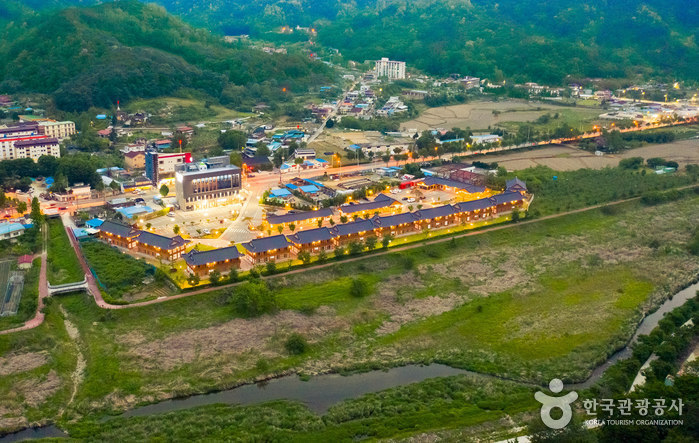
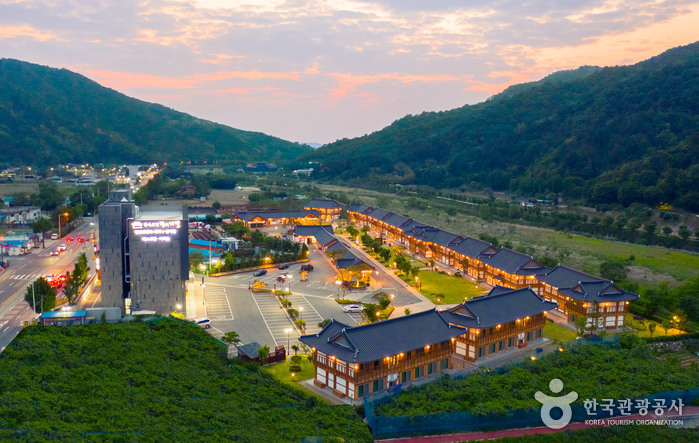

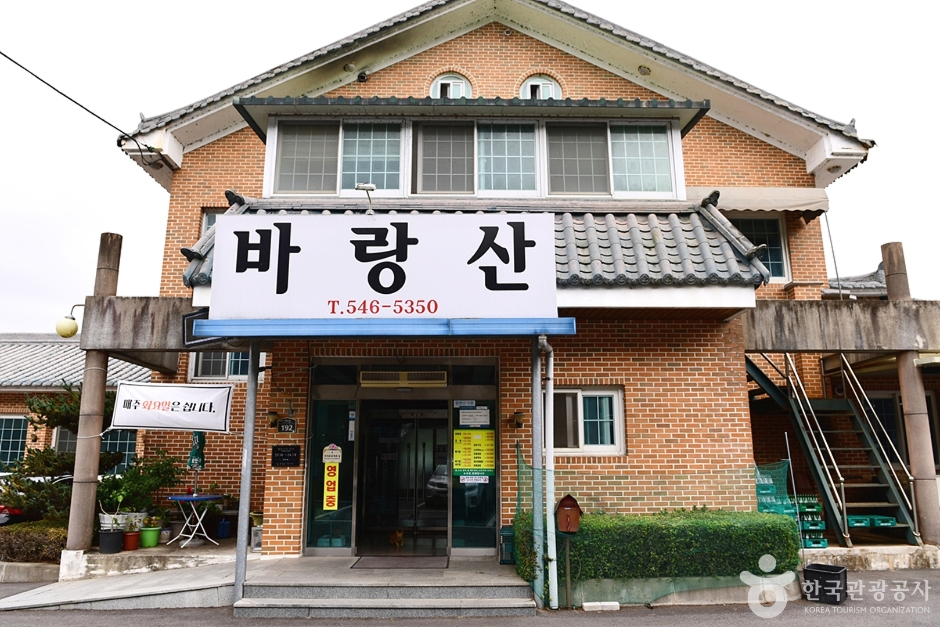

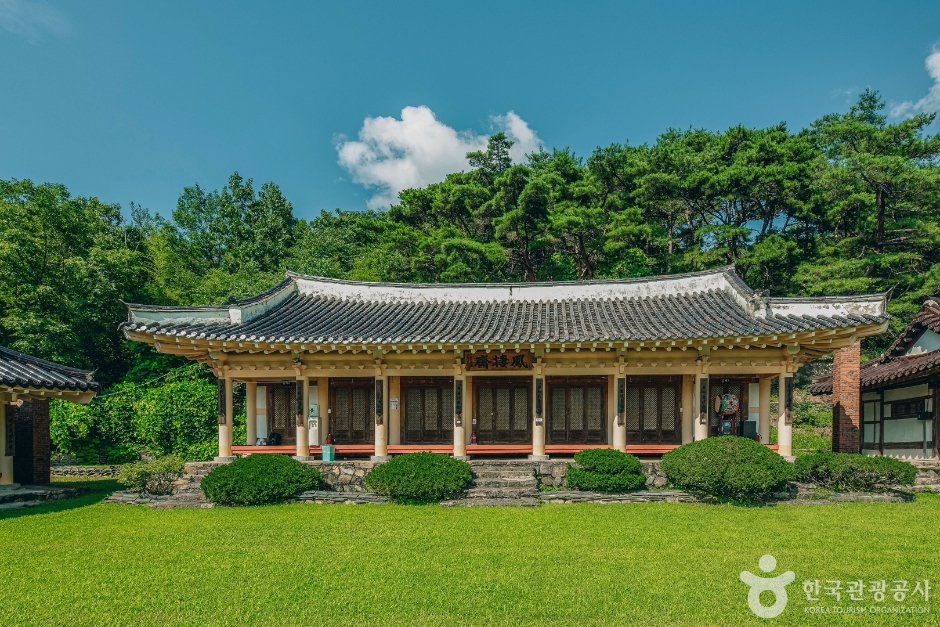
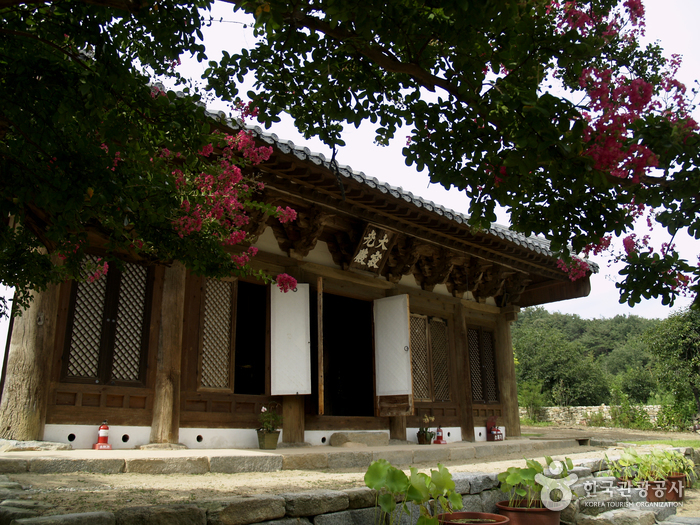
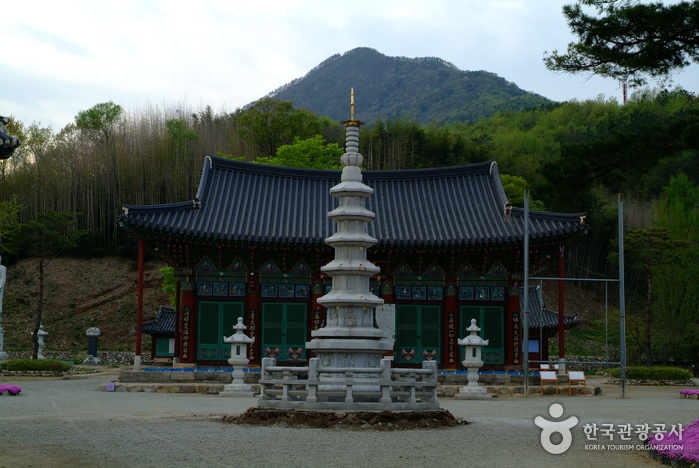
 English
English
 한국어
한국어 日本語
日本語 中文(简体)
中文(简体) Deutsch
Deutsch Français
Français Español
Español Русский
Русский